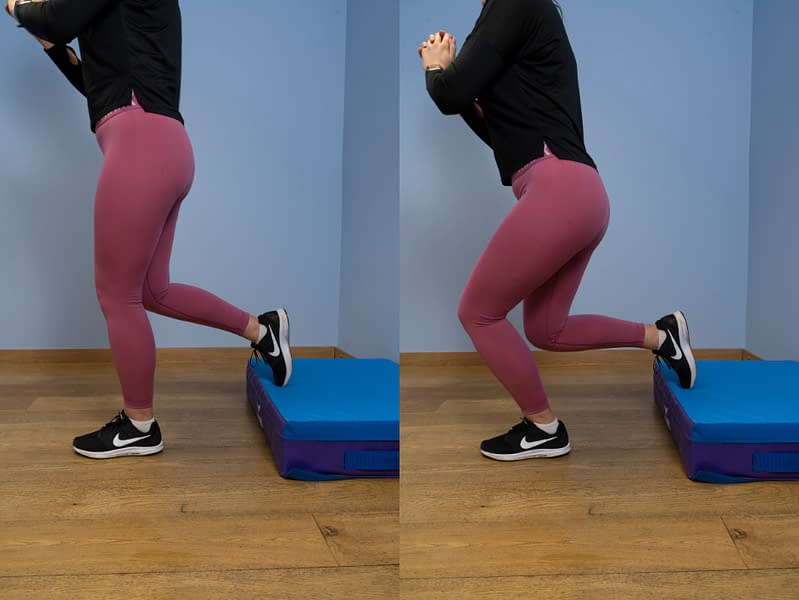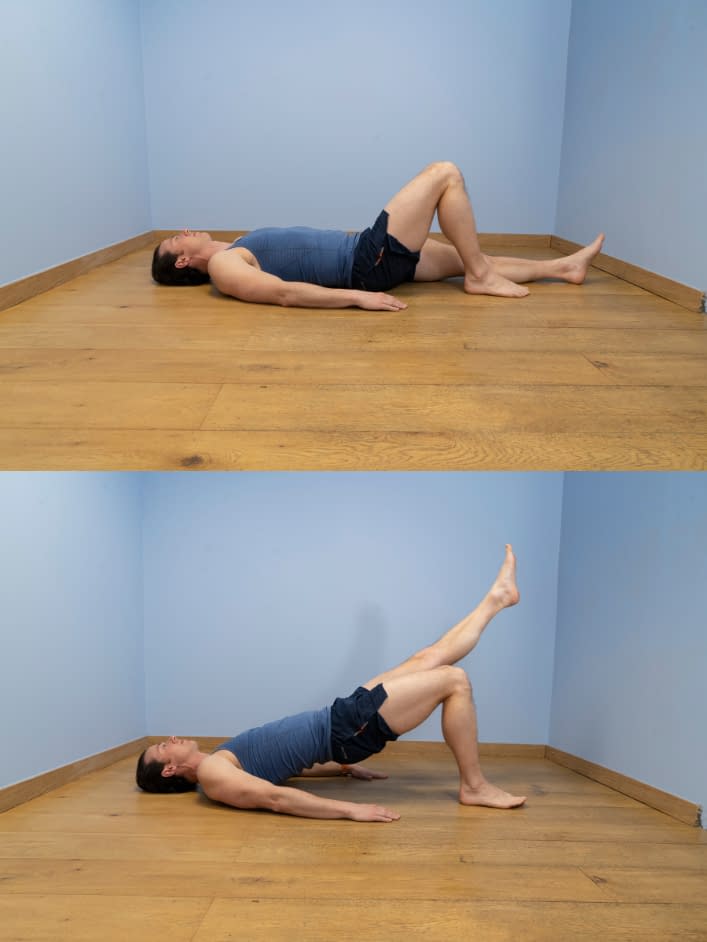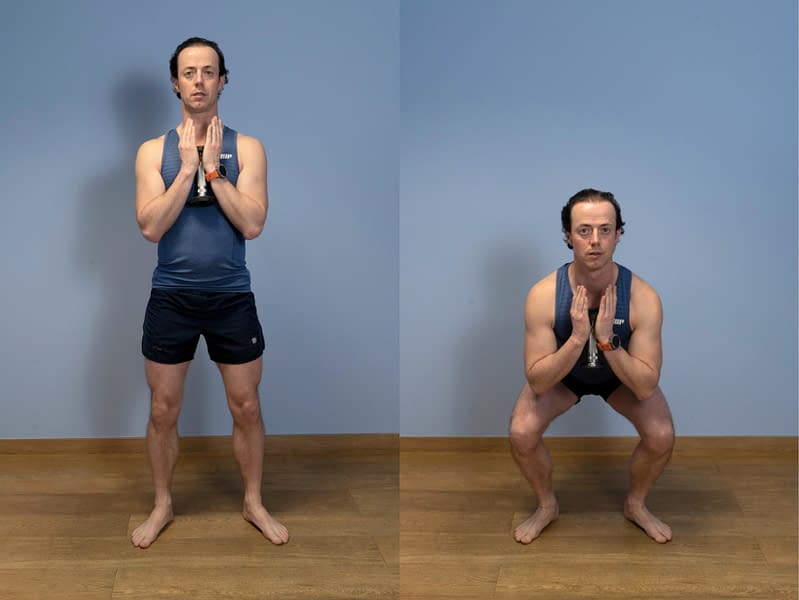Medial Collateral Ligament Sprain Advanced Exercise Programme
Aim to perform this programme a minimum of once per day unless prescribed otherwise. As with any new exercise, start slowly (repetitions as able) and build up as you are able within the guidelines below.
Pain should not exceed 4/10 whilst completing this exercise programme.
1. Raised split squat
- For this exercise, you will need a secure raised surface behind you such as a small step.
- Stand upright in front of the surface facing away from it.
- Transfer your weight on to the target leg and place the foot of the trailing leg up on the small step.
- Bend the knee and hip of the standing leg so that your hips lower directly downwards to the point where the trailing knee is just off the floor.
- Hold for 3 seconds before squeezing the buttock and thigh muscles to straighten the standing leg – do not forcibly lock out the knee.
2. Single leg hip bridge
- Lie on your back on the floor or bed with your knees bent at 90 degrees and your feet on the floor and your arms down by your side.
- Whilst keeping the knees in line with the foot and hip, kick the resting leg out straight so that it is off the floor.
- Push your heel down into the floor to gently lift your hips upwards.
- Lift as high as you feel comfortable but no higher than a straight line between hips, knees and shoulders – aim to keep the pelvis level throughout. Hold position for 5 seconds.
3. Weighted squat
- Stand upright with your feet hip-width apart and a weight placed evenly across your shoulders (back squat) or holding it securely against your chest (goblet squat).
- Engage the abdominal region and in a controlled manner, sit back as if you are sitting into a chair.
- At the same time, your head and chest will come forwards to maintain your balance, aim to keep your back straight.
- Go down as far as you feel comfortable or until your thighs are parallel with the floor.
- Come back up to standing and repeat.
We recommend consulting a musculoskeletal physiotherapist to ensure exercises are best suited to your recovery. If you are carrying out an exercise regime without consulting a healthcare professional, you do so at your own risk. If you have any concerns whilst completing these exercises, please contact a healthcare professional.
More Plans
This programme focuses on regaining or maintaining range of movement within the knee, and appropriate loading of the knee to maintain lower limb strength without aggravating symptoms. We can work into pain during these exercises but ideally this should not exceed any more than 4 out of 10 on your self-perceived pain scale.
- 0
- 1
- 2
- 3
- 4
- 5
- 6
- 7
- 8
- 910
This is the next progression. More focus is given to progressive loading of the knee as well as proprioception (perception or awareness of the position and movement of the body) and stability exercise. As with the early programme, some pain is to be expected but ideally, we do not want this to be any more than 4 out of 10.
- 0
- 1
- 2
- 3
- 4
- 5
- 6
- 7
- 8
- 910


